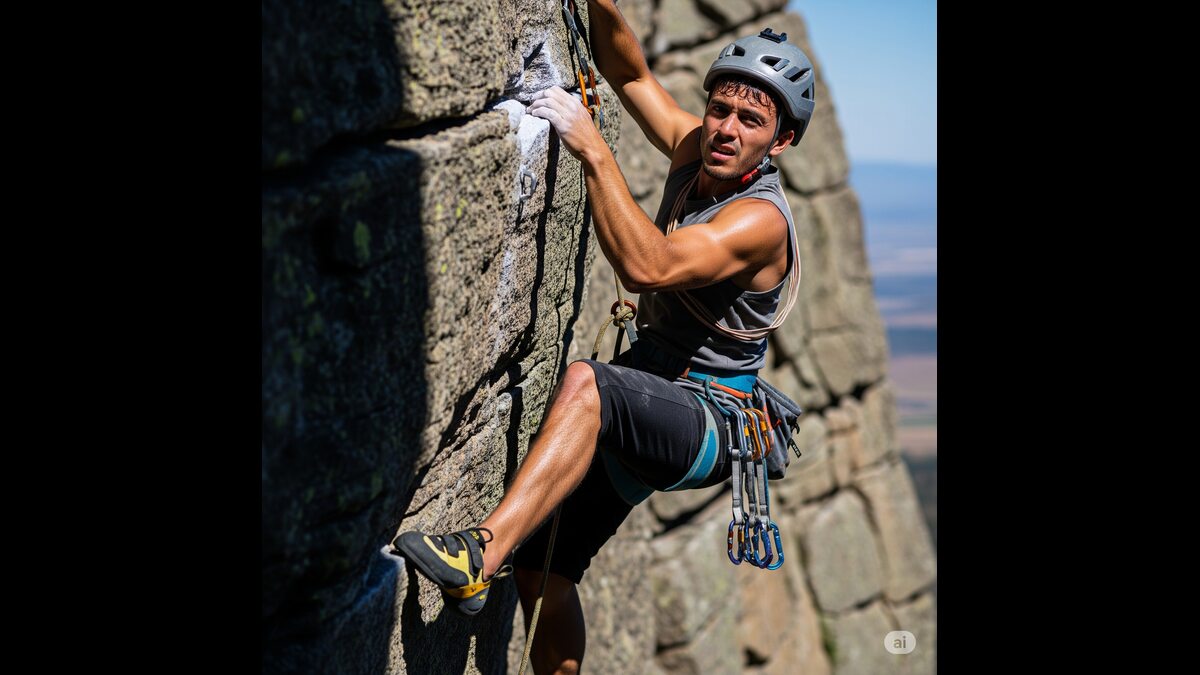Rock climbing is more than an adventurous sport—it’s a full-body workout that torches calories while building strength and endurance. Whether you’re scaling indoor walls or tackling outdoor crags, understanding the calories burned rock climbing can help you optimize your fitness and nutrition plans.
This guide dives into the science of caloric burn, factors influencing it, and how to make the most of your climbing sessions. Read on to learn how this dynamic activity can boost your fitness goals!
What Are Calories and Why Do They Matter in rock climbing?
Calories measure the energy your body uses from food to fuel activities like rock climbing. Knowing how many calories you burn helps tailor your diet for recovery or weight management. This is crucial for climbers aiming to balance energy intake and expenditure.
Rock climbing burns significant calories due to its demanding nature, engaging multiple muscle groups. By understanding caloric burn, you can make informed choices about post-climb nutrition. This ensures better performance and recovery after intense sessions.
How Many Calories Are Burned Rock Climbing?
Studies estimate rock climbing burns 400-900 calories per hour, depending on intensity and body weight. For a 180-pound person, moderate climbing burns about 500-750 calories hourly, while strenuous routes can hit 775.
The Metabolic Equivalent of Task (MET) for climbing ranges from 5 to 8.8, with higher values for tougher routes. Using the formula (MET x weight in kg x time in hours), a 73 kg person burns ~584 calories in an hour of general climbing.
Factors Affecting Caloric Burn in Rock Climbing
Body weight significantly impacts calories burned; heavier climbers expend more energy. A 140-pound person may burn 330-540 calories per hour, while a 180-pound climber burns 500-900.
Climbing intensity, duration, and technique also influence caloric expenditure. Efficient climbers may burn fewer calories, while beginners expend more due to less refined movements. Environmental factors like cold or fear can further increase burn.
Types of Rock Climbing and Their Caloric Impact
Bouldering, with short, intense bursts, burns around 8-10 calories per minute for a 155-pound person, similar to high-intensity cardio. It emphasizes power and strength, leading to high caloric burn in short sessions.
Top-rope or sport climbing, involving longer routes, burns 400-687 calories per hour for a 180-pound person. Trad climbing, with added gear weight, increases caloric expenditure due to sustained effort.
Indoor vs. Outdoor Climbing: Calorie Burn Comparison
Indoor climbing burns 310-374 calories per 30 minutes for a 74 kg person at moderate intensity. Controlled environments allow consistent effort, ideal for tracking caloric burn.
Outdoor climbing, like alpine or ice climbing, may burn more due to extreme conditions and psychological stress. Variable temperatures and fear elevate heart rate, increasing calorie expenditure.
How to Maximize Calorie Burn While Climbing
To boost calorie burn, climb challenging routes or extend session duration. Continuous climbing for 15-20 minutes on lower-graded routes keeps heart rate elevated for aerobic benefits.
Minimize rest between routes to maintain intensity, mimicking interval training. Adding weight (safely) or practicing ARC training (extended low-intensity climbing) can further increase caloric burn.
Tools and Methods to Track Calories Burned
Fitness trackers with heart rate monitors estimate calories burned based on movement and intensity. Apps like MyFitnessPal or online calculators use MET values for rough estimates, though accuracy varies.
For precision, consult an exercise physiologist to measure oxygen consumption (VO2) during climbs. Heart rate monitors provide decent estimates but may be off by up to 40% due to climbing’s intermittent nature.
Nutrition Tips for Climbers to Support Caloric Needs
Post-climb, consume protein-rich foods to aid muscle recovery and replenish energy stores. Avoid relying solely on calorie counts; listen to hunger cues to fuel climbing sessions effectively.
Hydration is key, especially for outdoor climbs. Pair your climbing routine with balanced meals to support performance without overeating, ensuring optimal recovery and energy.
Benefits Beyond Calorie Burn
Rock climbing enhances strength, coordination, and mental focus, engaging nearly every muscle group. It boosts aerobic and anaerobic fitness, improving overall cardiovascular health.
The sport also sharpens cognitive skills like problem-solving and spatial awareness. Its fun, engaging nature makes it a sustainable workout, unlike repetitive gym routines.
FAQs
How accurate are fitness trackers for climbing?
Trackers provide estimates but can be inaccurate due to climbing’s stop-start nature. Heart rate-based devices are more reliable than motion-based ones.
Does climbing difficulty affect calorie burn?
Yes, harder routes increase calorie burn due to higher intensity and muscle engagement. Volume (time spent climbing) also plays a significant role.
Conclusion
Rock climbing is a fantastic way to burn 400-900 calories per hour while building strength and endurance. Factors like body weight, climbing type, and intensity influence caloric expenditure, making it a versatile workout.
Use fitness trackers or MET-based calculators to estimate burn, but focus on fueling your body properly for recovery. Ready to hit the wall? Share your climbing experiences below or check out our guide on climbing nutrition for more tips!





https://shorturl.fm/lWKk5
https://shorturl.fm/k3xQt